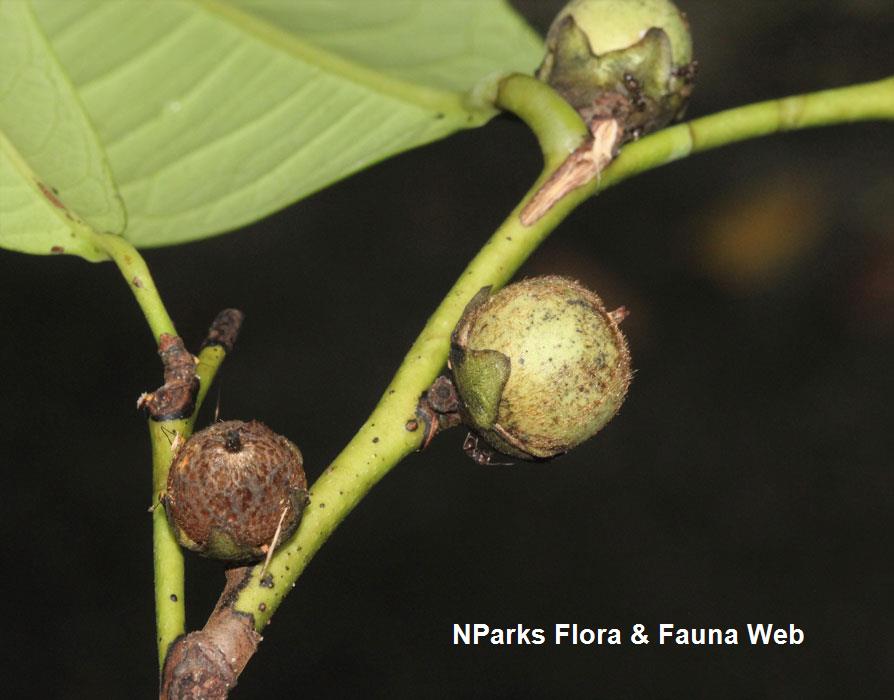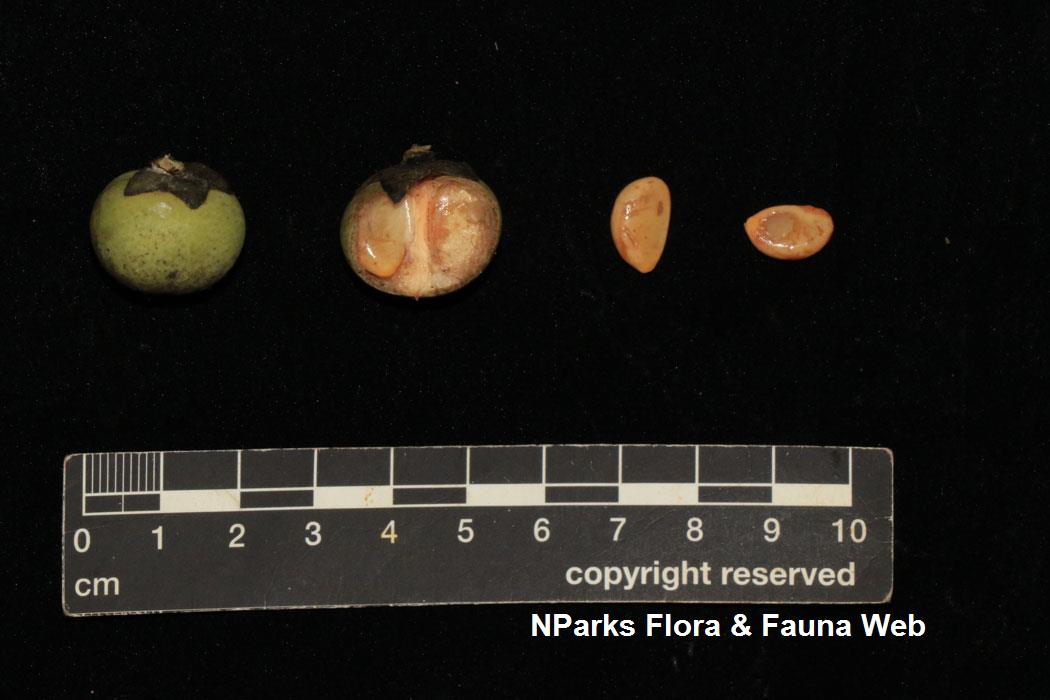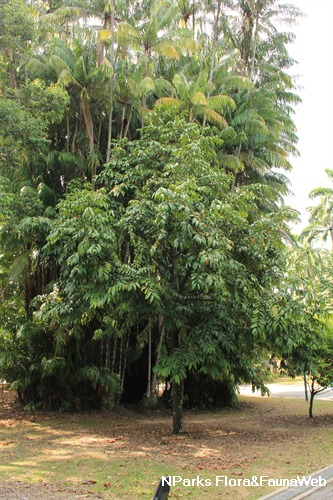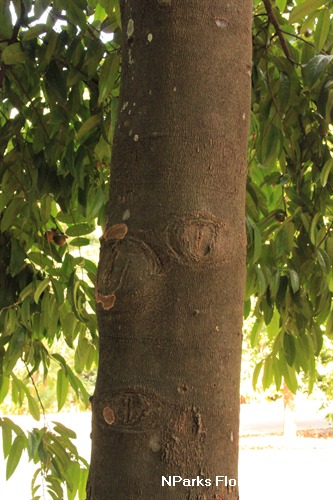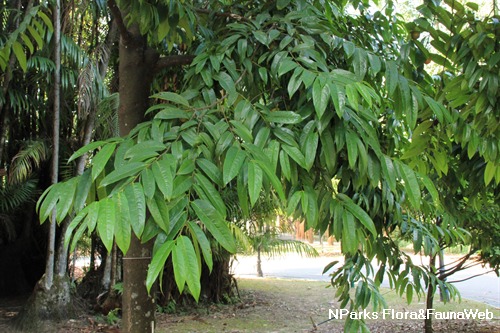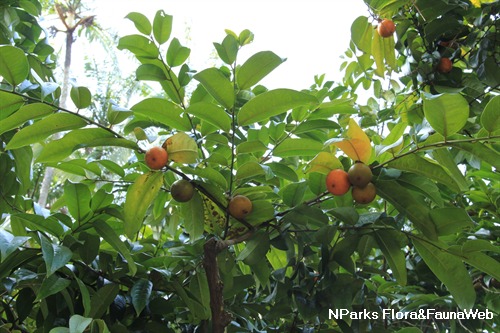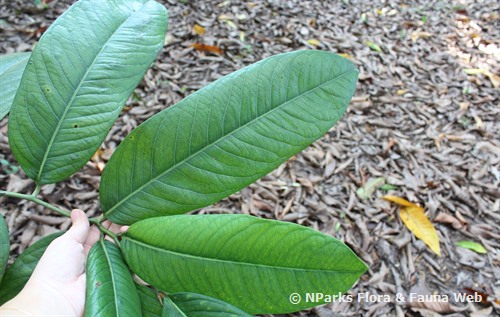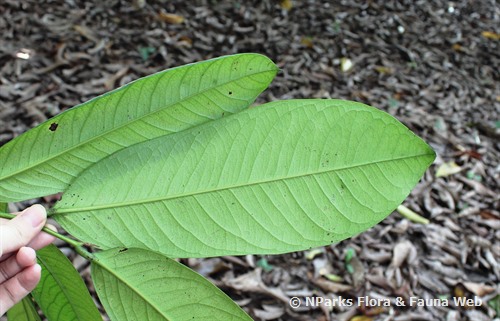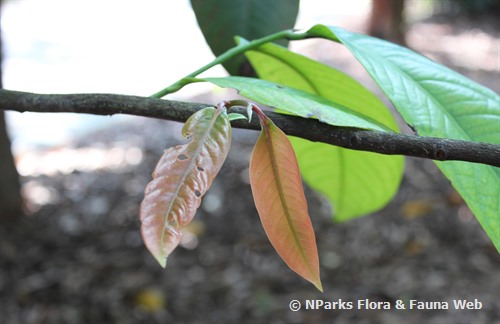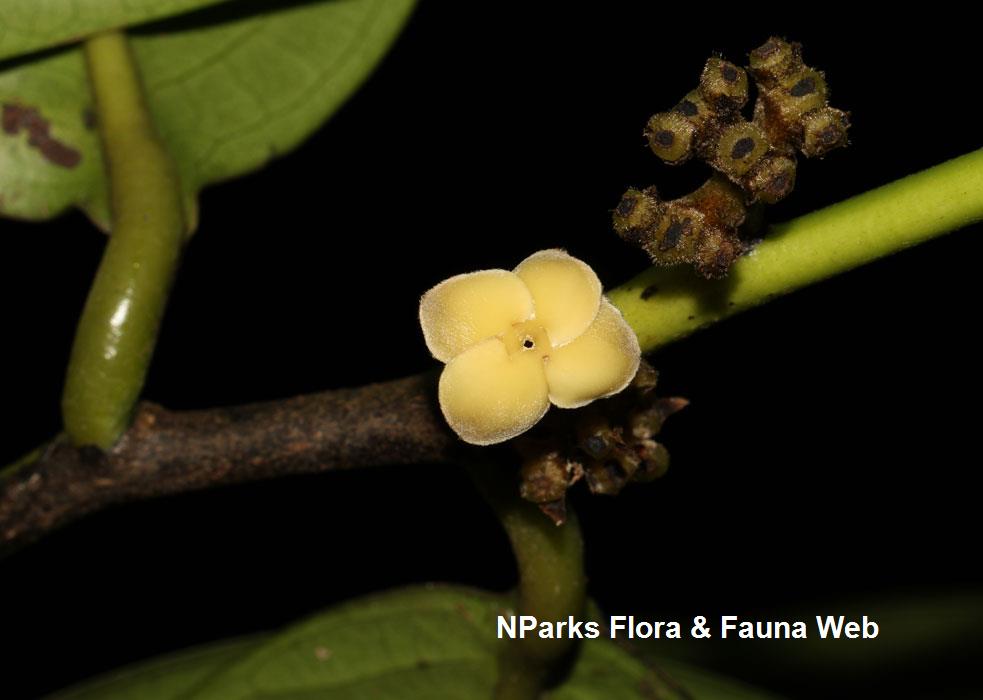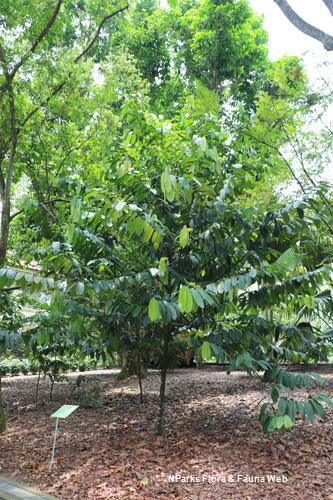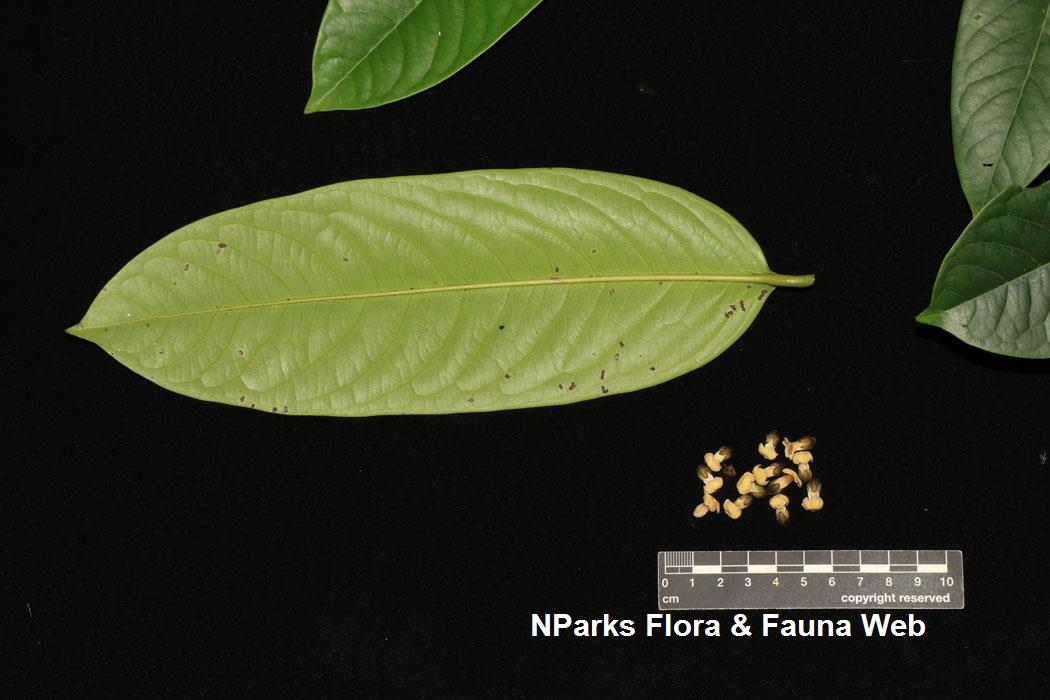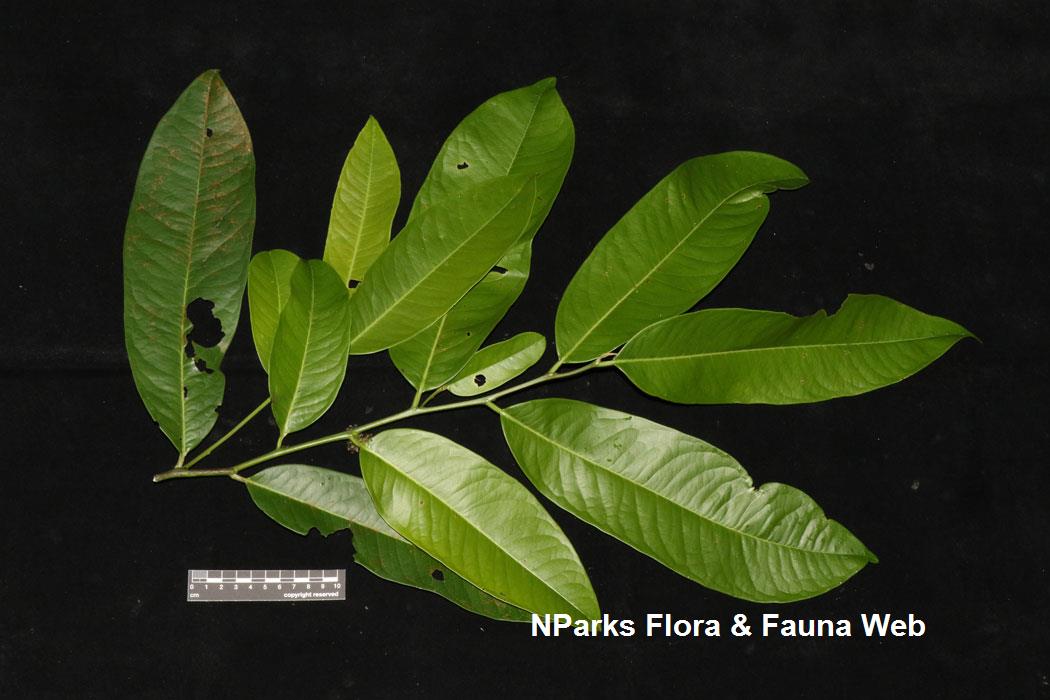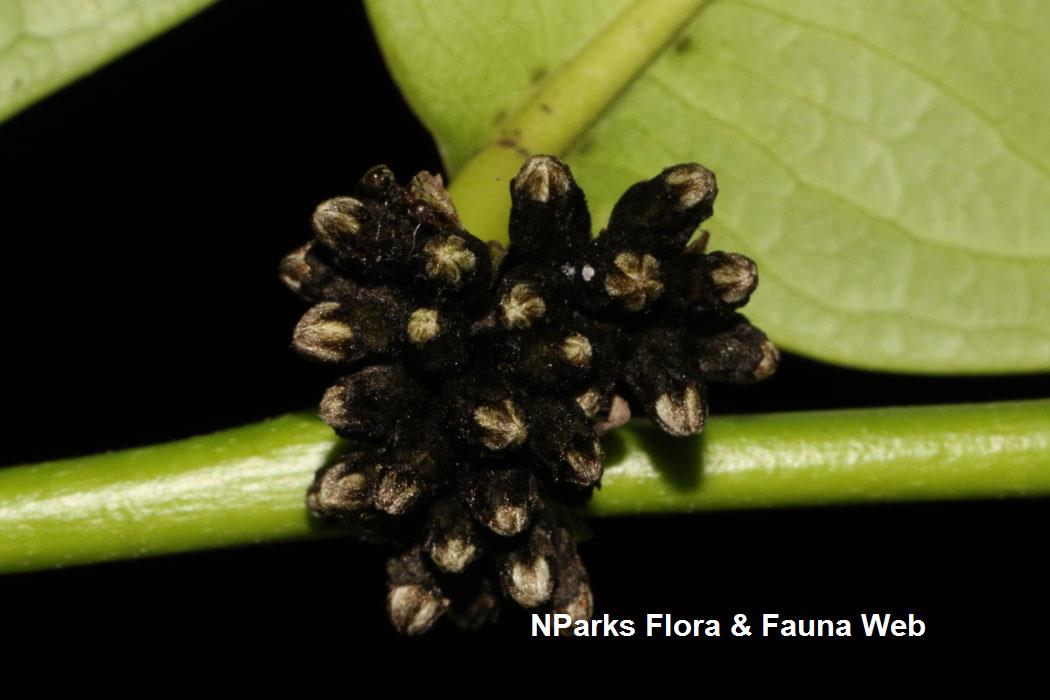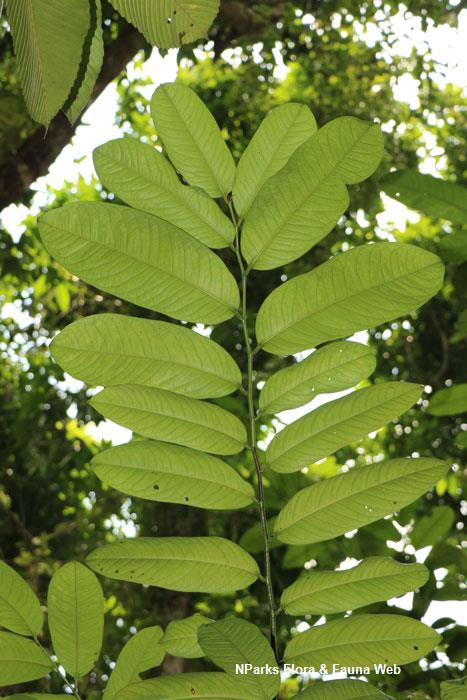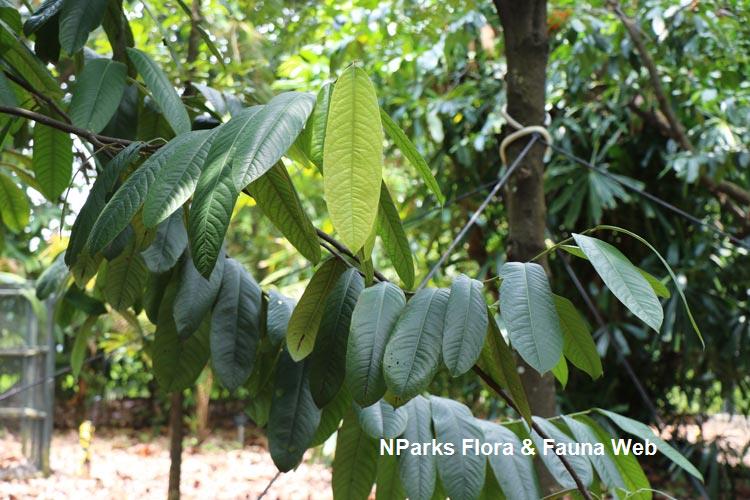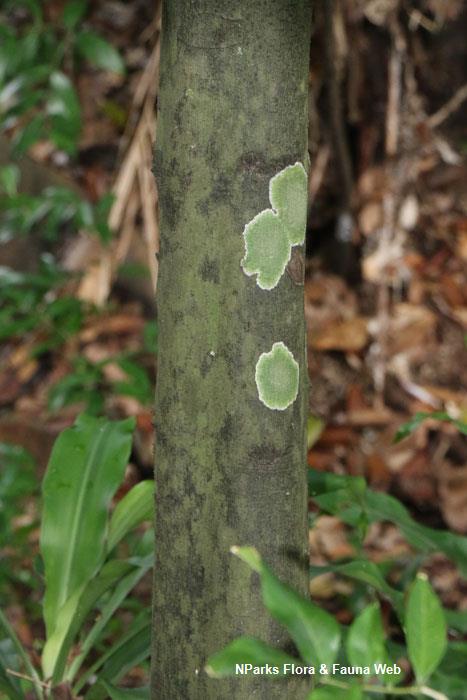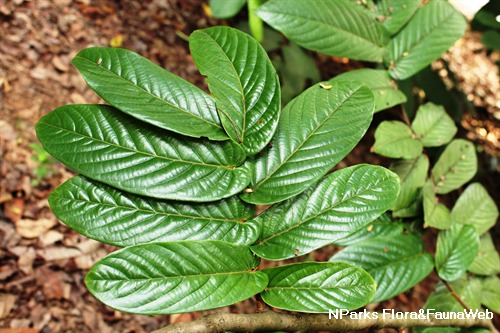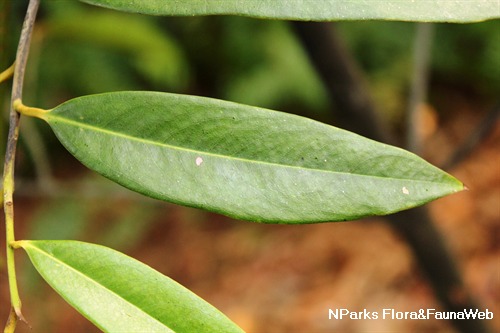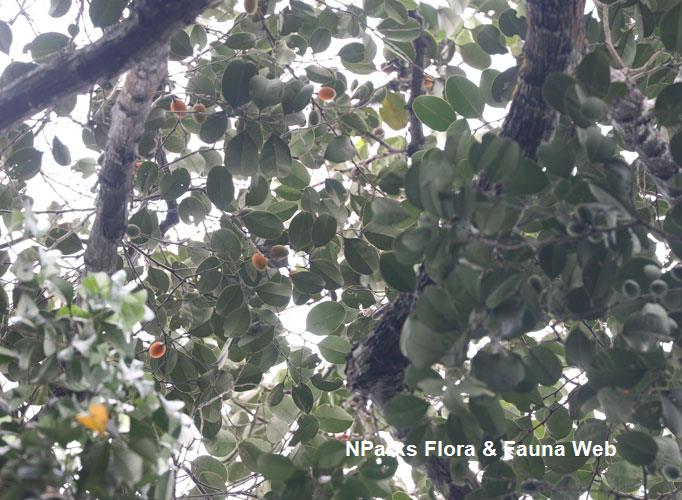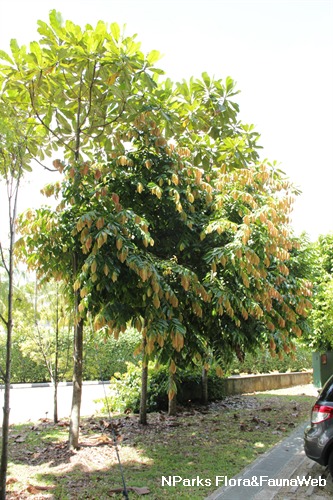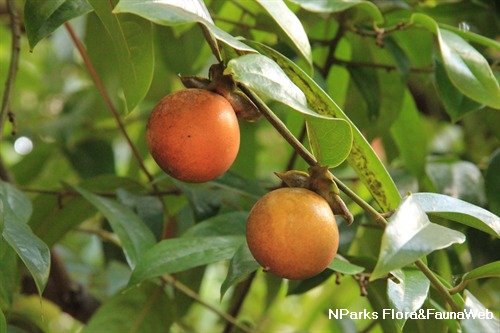
Back
Diospyros oblonga Wall. ex G.Don
| Family Name: | Ebenaceae |
| Synonyms: | Diospyros pilosanthera Blanco var. oblonga (Wall. ex G.Don) Ng, Diospyros pilosanthera Blanco, Diospyros sapotoides Kurz |
| Common Name: | Kayu Arang, Perlis Ebony |
Diospyros oblonga, also known as Kayu Arang, is a tree with black bark and globose fleshy fruit. Found naturally in rainforests, it thrives in cultivation when grown under full sunlight and fertile, well-drained soil.
Name
Classifications and Characteristics
| Plant Division | Angiosperms (Flowering Seed Plants) |
|---|---|
| Plant Growth Form | Tree |
| Lifespan (in Singapore) | Perennial |
| Mode of Nutrition | Autotrophic |
| Maximum Height | 20 m |
Biogeography
| Native Distribution | From Myanmar, Thailand Peninsular Malaysia, Singapore, Borneo, Indonesia to the Philippines |
|---|---|
| Native Habitat | Terrestrial |
| Preferred Climate Zone | Tropical |
| Local Conservation Status | Native to Singapore (Endangered (EN)) |
Description and Ethnobotany
| Growth Form | It is a tree, up to 20 m tall, with dark grey to black bark |
|---|---|
| Foliage | The leaves are ovate or oblong, measuring 14 – 40 cm long and 4.5 – 13 cm wide, and in alternate arrangement. Each leaf has 15 – 22 pairs of lateral veins. The leaf tip is pointed while the base is rounded to acute. The petiole is 1 – 1.5 cm long. The leaf size can be highly variable. |
| Flowers | The flowers are unisexual and occur in a branched cluster (cymose) at the leaf axils. Male inflorescence has 5 – 12 flowers while female inflorescence has 1 – 3 flowers. Both male and female flowers have five petals and sepals. |
| Fruit | The fruit is globose, measuring 2.5 – 3 cm in long and 3 – 4 cm wide, fleshy, with calyx lobes. It is densely hairy at first and gradually becoming glabrous as it matures. The fruit calyx can be very variable. |
| Habitat | It is found in rainforests, up to 900 m altitude. |
| Associated Fauna | Flowers are pollinated by insects. |
| Etymology | The genus epithet comprises of two parts. dios, in Greek, means god while puros, in Greek, means wheat or fruit, which refers to the edible persimmon fruit in the genus. Specific epithet oblonga, in Latin, means oblong, referring to the plant’s leaf blade. |
| Ethnobotanical Uses | Timber & Products: The timber of this genus is prized for its ornamental streaking and is used for carvings and furniture. |
Landscaping Features
| Desirable Plant Features | Ornamental Flowers, Ornamental Fruits |
|---|---|
| Landscape Uses | Parks & Gardens, Small Gardens |
Fauna, Pollination and Dispersal
| Pollination Method(s) | Biotic (Fauna) |
|---|
Plant Care and Propagation
| Light Preference | Full Sun |
|---|---|
| Water Preference | Moderate Water |
| Plant Growth Rate | Moderate |
| Rootzone Tolerance | Moist Soils, Well-Drained Soils |
| Propagation Method | Seed |
Foliar
| Mature Foliage Colour(s) | Green |
|---|---|
| Mature Foliage Texture(s) | Leathery |
| Foliar Type | Simple / Unifoliate |
| Foliar Arrangement Along Stem | Alternate |
| Foliar Attachment to Stem | Petiolate |
| Foliar Apex - Tip | Acuminate |
| Foliar Base | Rounded / Obtuse, Acute |
Non - Foliar and Storage
| Root Type | Underground |
|---|
Floral (Angiosperm)
| Flower & Plant Sexuality | Unisexual Flowers |
| Flower Grouping | Cluster / Inflorescence |
|---|---|
| Flower Location | Axillary |
Fruit, Seed and Spore
| Mature Fruit Colour(s) | Orange |
|---|
References
| References | de Kok RPJ & Puglisi C (2021) Typifications and combinations in the Ebenaceae of Peninsular Malaysia and Singapore. Kew Bulletin, 76: 293–308. Lemmens, R.H.M.J., Soerianegara, I., and Wong, W.C. (Editors). 1995. Plant Resources of South-East Asia Volume 5 (2). Timber Trees: Minor commercial timbers. Indonesia: Prosea Foundation. 655 pages. Ng, F.S.P. (2002). Ebenaceae. In: Soepadmo, E., Saw, L.G. & Chung, R.C.K. (eds) Tree flora of Sabah and Sarawak, vol. 4. Pp. 29 – 100. Malaysia: Sabah Forestry Department, Forest Research Institute Malaysia, & Sarawak Forestry Department. Phengklai, C. (1981). Ebenaceae. In: Smitinand, T. & Larsen, K. (eds) Flora of Thailand, vol 2, part 4, pp. 281–391. Bangkok: The TISTR Press. |
|---|
Image Repository
Others
| Master ID | 29636 |
|---|---|
| Species ID | 3945 |
| Flora Disclaimer | The information in this website has been compiled from reliable sources, such as reference works on medicinal plants. It is not a substitute for medical advice or treatment and NParks does not purport to provide any medical advice. Readers should always consult his/her physician before using or consuming a plant for medicinal purposes. |

